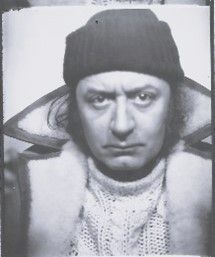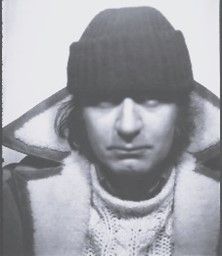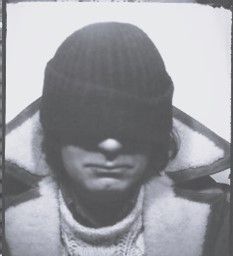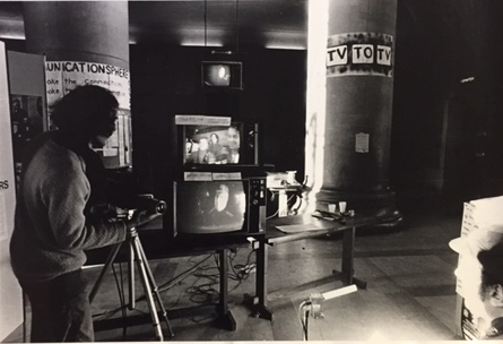1976-1984
CAVS, MIT
1976
In 1976, Tambellini left Brooklyn, NY to join Otto Piene, as a Fellow at CAVS at MIT in Cambridge, MA.
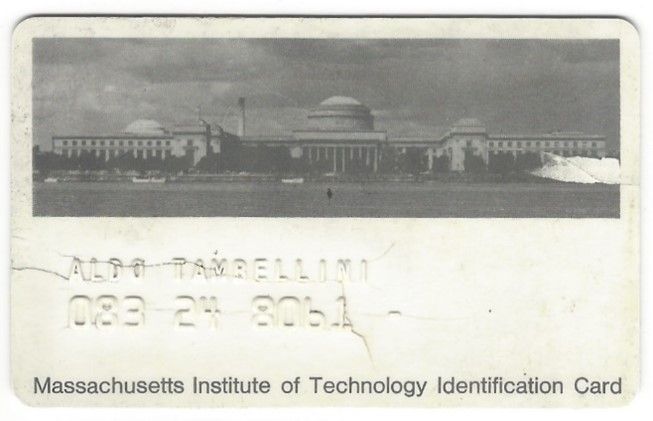
Tambellini at MIT, ca. 1970s
1977
The Picturephone Event, organized by the Illinois Bell Telephone Company on June 8, 1977, was a significant milestone in communication history. It showcased the first-ever live two-way communication using the Picturephone system. This groundbreaking event provided two conference sites for artists Aldo Tambellini and Sonia Sheridan to delve into the possibilities of this technology in the realms of visual and media art. By granting artists the opportunity to experiment with the Picturephone, the group sought to uncover novel applications that could enrich the communication methods already employed by businesses for artistic endeavors.
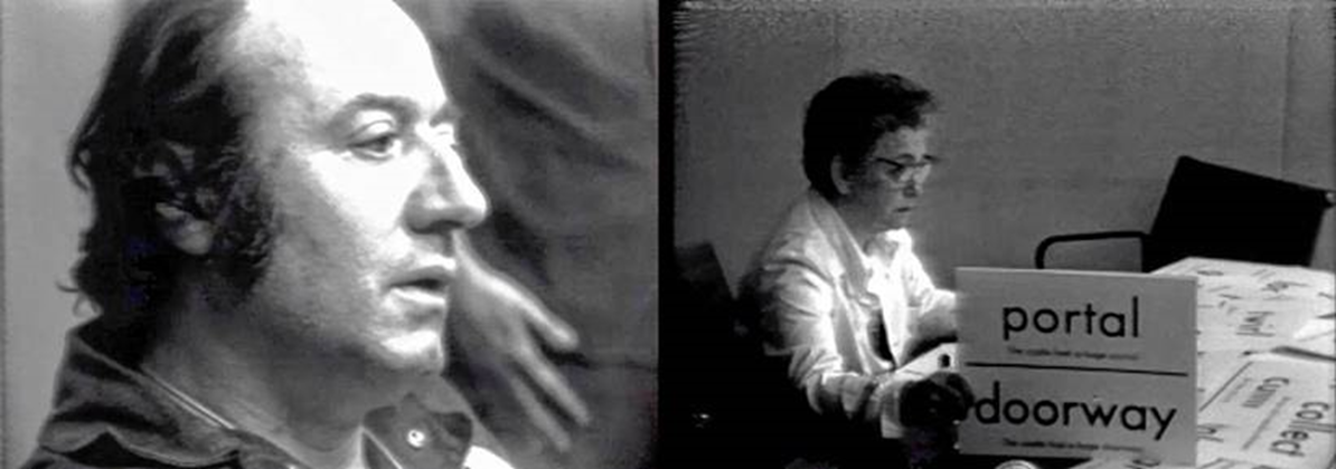
Artists Aldo Tambellini and Sonia Sheridan, communicating using Picturephone, 1977
Moonblack, a tribute to Leonardo, took place during
Centerscreen at the Carpenter Center at Harvard University in Cambridge, MA. The mime performer, Sarah Dickinson, was accompanied by a drummer.

Sarah Dickinson performing Moonblack, 1977
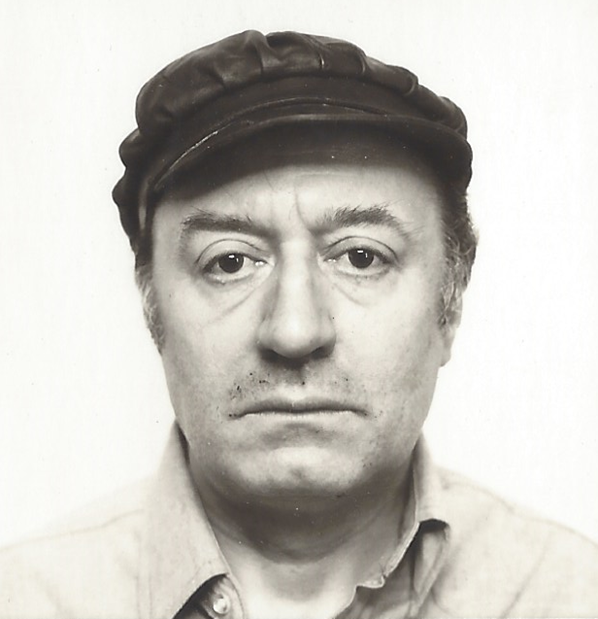
1979
In May 1979, the Vancouver Art Gallery hosted an event titled "Pacific Rim: Slow Scan," which served as a visual communication platform for the PEASESAT users group across the Pacific. This involved utilizing the ATS-l satellite by NASA to establish a slow scan link connecting ATS-l stations in Rarotanga (Cook Islands), Santa Cruz (California), Wellington (New Zealand), and Vancouver. The communication was facilitated through the terminal at Simon Fraser University Communication Studies Department, with the use of a telephone link. The event was organized by Bill Bartlett, coordinator of the Direct Media Association on Bender Island, British Columbia, and featured the involvement of Aldo Tambellini and Antonio Muntadas from the Center for Advanced Visual Studies at M.I.T.
Tambelleini introduced the innovative concept of Two-Way-Live during an event at the Boston Film Video Foundation on May 19, 1979. This interactive system utilized a closed circuit television setup that enabled audience engagement. The setup included video monitors, two cameras, microphones, and an audio amplifier. The exchange of video and audio signals took place between two distinct locations, one indoors and the other outdoors. Through this setup, participants were able to partake in diverse forms of interpersonal communication.
On December 14, 1979, an innovative project called TV to TV took place, building upon the foundation of Two-Way Live. Led by Tambellini, this endeavor utilized the resources of M.I.T. to establish an interactive community event. Flyers were disseminated throughout the community, inviting performers and individuals with a keen interest to actively participate. This highly acclaimed event generated a remarkable sense of enthusiasm within the community, emphasizing the significance and value of interpersonal interaction.
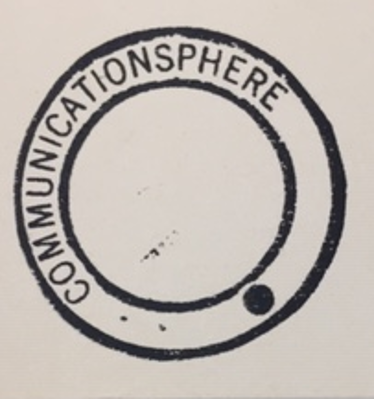
1980
Tambellini founded Communicationsphere – a network to develop channels among artists, technician, engineers and performers and all concerned with the impact of tele-communications on contemporary society.
“Technology and culture are interrelated from an industrial-electronic society we are moving to a communications-information society – telecommunications brings the world screen to screen and we become one with the new perception of the world –the electromagnetic spectrum is to be considered a natural resource for creative activity. Transmitted information is a new form of art – this is the age of mass media & technology – this is the age of satellite and instant global communications this is the age of networks – the age of interactive media. The human system is in the process of globalizing itself. We live in a reality defined by the structural invention of the mass media-printed & electronic images are the building blocks of our cultural evolution. New imaging systems are being invented – new storage capabilities are being invented – reality is being constantly reinvented.”
Aldo Tambellini, statement (partial), 1980 CAVS, MIT published in “Centervideo,” CAVS, M.I.T. Cambridge, Massachusetts, February 1981
On February 16, 1980 Tambellini helped to coordinate and participated in
ARTISTS' USE OF TELECOMMUNICATIONS. Tambellini with the Communicationsphere Group, in cooperation with the Center for Visual Studies, Educational Video Resources and the Architecture Machine Group, M.I.T. created this event which utilized a live international audio and video link. Communication was via standard telephone lines. Each location had two separate lines. Each location had two separate lines-one coupled to a computer terminal-the other to a slow scan transceiver (Robot 530). All computer terminal lines were connected to the I.P. Sharp Electronic Mail Service central computer in Toronto, Canada which accommodated communication among all locations. The slow scan lines were linked to the Kellogg Conferencing Center in Denver, Colorado. Denver transmitted images to all locations. When one location sent slow scan images, all other locations received them.
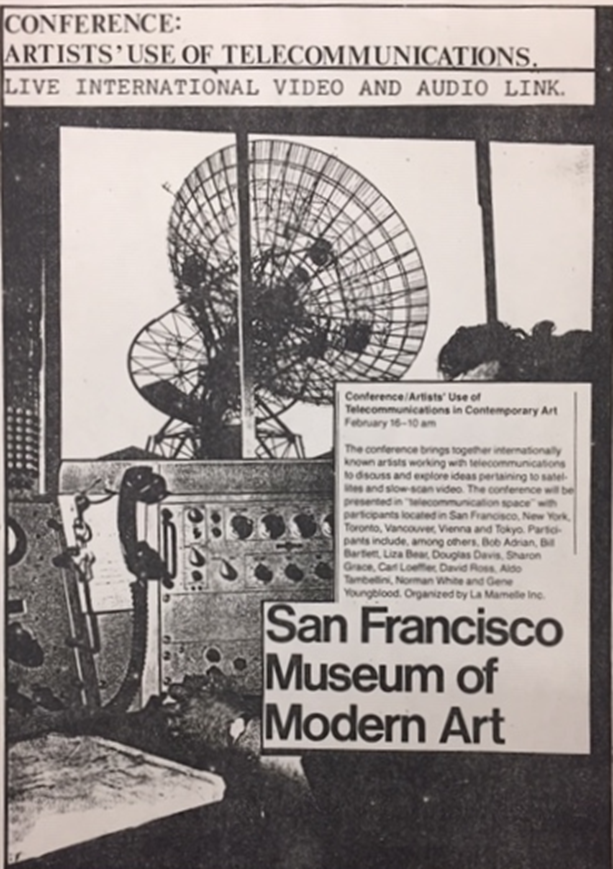
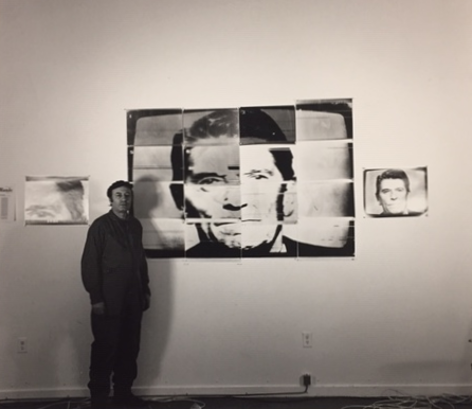
Tambellini in Paris, France, with transmitted Interface mural, 1981
1981
In February 1981, an international event, called Interface, was organized by the Center for Advanced Visual Studies at the Massachusetts Institute of Technology. The event took place simultaneously in two locations: one at MIT in Cambridge, Massachusetts, and the other at the American Center for Artist and Student in Paris, France. The coordination of the sites was overseen by two artists who traveled to each location for the event. Roland Biladi, a French artist from Paris, supervised the MIT site, while Aldo Tambellini, the originator of the concept and a Fellow at CAVS, supervised the Paris site. The main objective of the event was to facilitate a real-time "exchange" of artistic leadership by creating two large murals measuring ten feet by fourteen feet each, one at each site. The murals depicted images of the Heads of State, President Reagan of the United States and French President Giscard d’Estaing, which were divided into 16 sections. These sections were transmitted via slow scan through a transatlantic telephone cable at a rate of eight seconds per frame. Each frame was captured using a Polaroid camera upon reception and then developed in a darkroom. The assembled pictures were showcased in front of an audience, forming a mosaic mural.
Tambellini presents
TELE-SKY, a slow-scan event between CAVS, MIT with Sarah Dickinson, performing and interacting with artists from Sydney Australia as part of the Sky Art Conference of 1981.
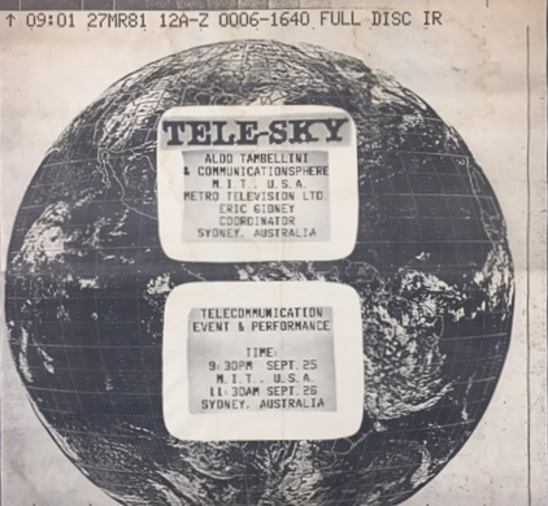
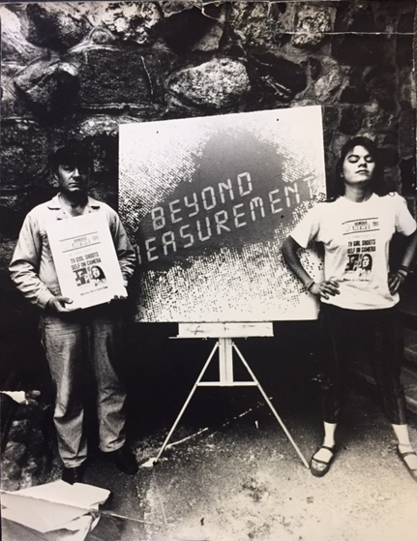
Tambellini (left), with MIT student, 1982
1982
Tambellini’s Communicationsphere group launches “Generic News,” a newspaper focused on disinformation, with a satirical twist on fabricated current events. No. 0 appeared first in “COMMUNICODES,”,
Festival of the Future, DeCordova Museum, Lincoln, MA, June 26-27, 1982.
“In a world increasingly becoming generic with the expansion of generic products – the arrival of Generic News was inevitable.”
-Aldo Tambellini, 1982
1983
Tambellini was sent to Brazil, representing CAVS, to showcase the artistic, engineering, and student works at the 1983 Sao Paulo Biennale. Originally intended as a brief visit, his stay extended to a remarkable 10-month sojourn. Being of Brazilian descent, Tambellini opted to remain in Brazil, immersing himself in the language, exploring his cultural roots, and establishing connections with long-lost relatives residing in Sao Paulo. Upon his return to MIT, his choice to stay in Brazil was met with disappointment from the MIT faculty. Frustrated, Tambellini chose to step down from his position but maintained close ties with the students and faculty at CAVS.

Tambellini’s postcard to Sarah Dickinson
1984
Tambellini orchestrated an event called 5 Minutes in Pittsburg, in partnership with the Carnegie Institute of Technology. The participants were dispersed throughout various locations in Pittsburg, each equipped with different forms of media. Precisely at noon, they utilized the assigned medium to document a 5-minute segment of activities. Following this endeavor, the group reconvened and collectively transformed their recordings into a digital newspaper, aptly named 5 Minutes in Pittsburg.
NEXT CHRONOLOGY CHAPTER
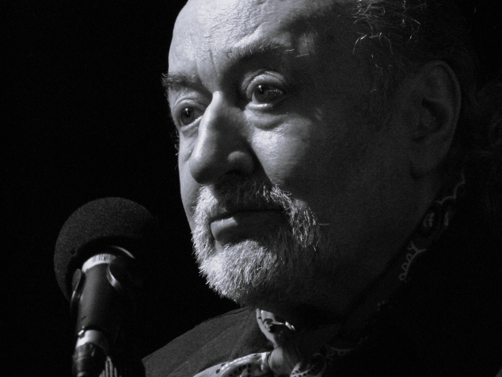
1985-2008
Focus on Poetry
“As an artist, I respond to my inspirations, my thought and intuition. Often my creativity is triggered by headlines from newspapers or magazines… I capture language from overheard conversations, observe the world around me for news, trends and feelings… The age of 89 has certainly given me many experiences from which to draw material from, including: a major World War with air raids on my neighborhood, which I miraculously survived; relocation to my birth country where I felt like a stranger; the paranoia and hospitalization of my Mother (a collateral damage of war); the falling apart of my family; my own aging process and the political and power issues that are experienced by the population living in a land of discrimination, inequality, and disenfranchisement.”
-Aldo Tambellini, 2019


